A Red Flag Warning is simply a heads-up to fire managers and residents to watch out for potential wildfires nearby. If you are in an area that has been issued a Red Flag Warning, it’s key to know what it means and understand what to do to stop fires from starting.
In this guide, we discuss all there is to know about a Red Flag Warning and provide valuable guidance on ways to be fire-adapted to increase the safety of you and your family.
Key Points
- Red Flag Warning means high wildfire risk due to weather (low humidity, high temperatures, strong winds).
- Therefore, make an evacuation plan, pack a go-kit, and prepare for possible fire ignitions.
- It is advisable to clear flammable materials around your home and completely extinguish cigarettes before disposal to avoid the risk of brushfires.
- Additionally, never leave any fire unattended and exercise caution with campfires.
- Immediately report any suspicious activities or fire sightings to authorities for swift intervention.
Why Are You Getting a Red Flag Warning
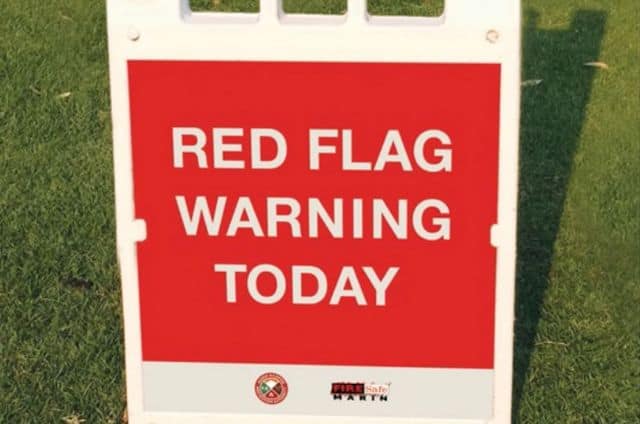
You are issued a Red Flag Warning whenever weather conditions heighten the risk of the rapid spread of wildfires. Such increased risk of fire danger results when very low humidities, warm temperatures, and stronger winds combine, and any fire that starts may rapidly spread and become difficult to extinguish.
The National Weather Service issues this warning to a select area when the fire danger is about to occur now or shortly. This announcement is usually within 24 hours in advance on radio and TV, so there’s time to act on short-term fixes.
During a Red Flag Warning, it is crucial that you follow the instructions from your local fire department and be prepared to take immediate action in case a wildland fire flares up in your area.
Red Flag Warnings frequently happen in spring and fall months but they might arise at any point of the year. Therefore, exercise caution and implement proper fire safety practices if engaging in burning activities or doing anything with fire.
Ring Device Health indicating high voltage? Ensure safety by checking wiring and consulting an electrician to prevent damage and ensure proper functionality.
What Do You Do When You Get a Red Flag Warning: Tips to Stay Safe!
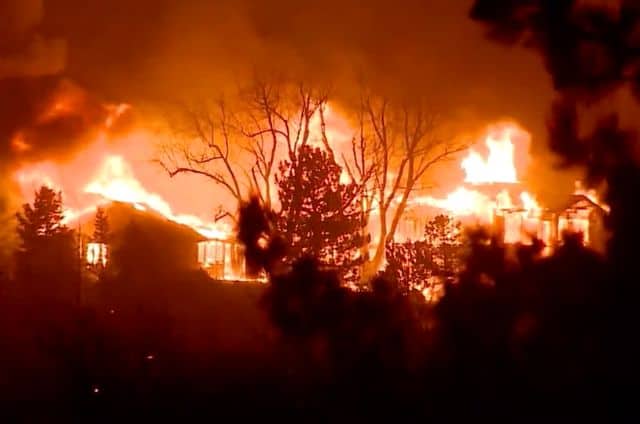
Remember, Red Flag Warnings are issued to help keep communities safe. It is, therefore, crucial to take these alerts seriously to keep yourself, your loved ones, and your property safe from wildland fire threats.
Here are some things you can do to stay vigilant if your area is at high risk for wildfire.
1. Prepared for Evacuation
First things first, if you are going to survive a wildfire, then you should prepare for a possible evacuation.
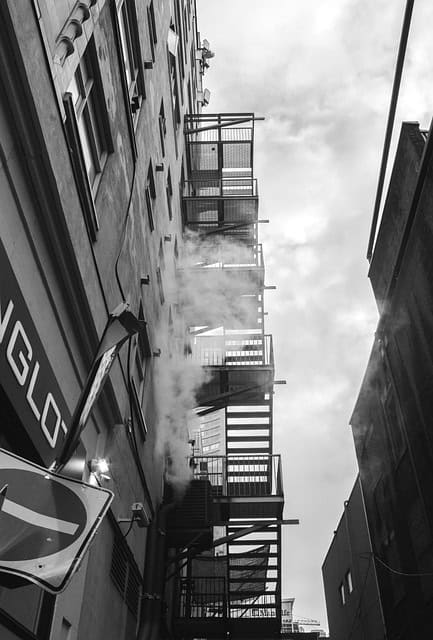
Here are some fire preparation tips for such cases:
- Check that your cell phone or tablet is fully charged and ready for alerts and within hearing at all times.
- Ensure you park your car outside and that it has plenty of gas
- Override the automatic garage door openers so you can operate the door manually in case the power goes out.
- Have your “Go” kit packed and near your door so they are easy to grab in evacuation panic mode.
- Make an evacuation plan and collect all necessary supplies, such as a good portable radio and flashlights, ready to go. Do not forget emergency first-aid supplies, prescription medications, and important documents.
- Make an effort to know where your loved ones are—especially those with mobility issues or disabilities. You’ll want to have a plan on ways to control any livestock or pets, too.
2. Prepared for Ignition
As you prepare for a possible evacuation, you should get ready for possible ignitions as well and look for ways to prevent fire from burning.
Here is how:
- Make sure you hook up the garden hoses with spray nozzles attached and ready to use. The best practice is to avoid leaving your garden hose randomly piled up, as it’ll likely tangle.
- Bring flammable materials like outdoor cushions inside your house and ensure that you close all of your car and house windows before leaving your home for the day.
- If you have a pool with a special pump system, leave the pressure washer in an available location. In an emergency, this pump can help firefighters pump water from your pool.
- You have to trim tree branches, making sure the tree stands 10 ft (3.05 m) high from the ground to reduce the chances of fire reaching the treetops. Do not forget to remove firewood piles from the house and cover them with a fire-resistant cover.
- Regularly clean gutters, roofs, patios, porches, and eaves to remove pine needles, leaves, and other debris.
3. Avoid Anything That Can Create Sparks
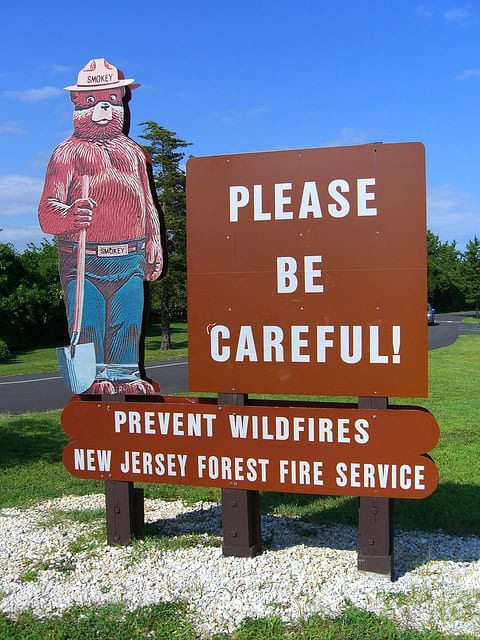
On Red Flag Days, avoid using equipment that could accidentally spark and ignite a wildfire. Now more than ever, you do not want to be reckless with fire!
You should adhere to the following practices:
- Never shoot fireworks into the woods, dry grass, or shrubs.
- Please be conscious and cautious when hooking up your toy trailer, RV, or any other trailer with chains. Ensure you secure the chains safely and keep them from dragging when you are on the road.
- Avoid using lawnmowers, chainsaws, and other power equipment. Follow all local fire restrictions when using these types of equipment during high-risk times.
- Any outdoor burning, such as the use of open flames or outdoor grills, is not recommended in fire-prone areas.
- Do not drive your vehicle over tall, dry grass, as the undersides of cars are hot and could easily cause grass to catch fire.
- Use extreme caution with blowtorches, yard works, or welding projects.
4. Keep Fires Under Control
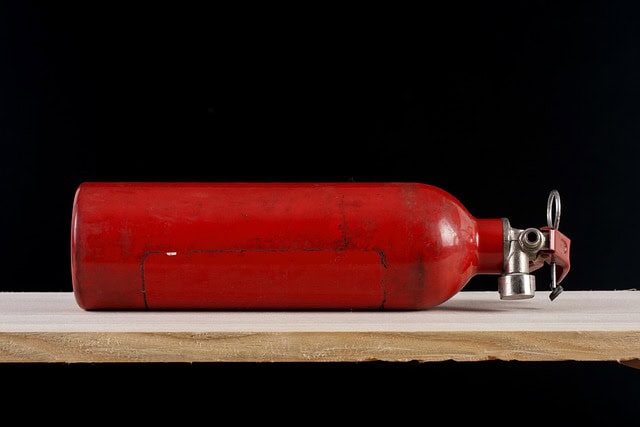
Since embers or sparks can easily ignite nearby grass or leaves, always make sure that someone is actively supervising any burning fire.
Here are tips to keep fires under control:
- Do not use a burn barrel to burn paper, leaves, and natural materials since they do not combust efficiently. But if by any chance you are allowed to use them in your area during a Red Flag Warning, then use a burn barrel with a screen on top or a weighted metal covering.
- You are not allowed to burn foam, hazardous materials, plastic, or other household trash. They can emit hazardous chemicals into the air, which can quickly get out of control.
- Never leave any fire unattended, whether it’s a bonfire, grill, hot coal, or other outdoor fire.
5. Properly Dispose of Smoking Materials
Never toss out smoking stuff like cigarettes, pipes, and cigars from your car window as they can ignite dry grasses easily, causing major brushfires. Even dropping a lit match carelessly might set fire to nearby dry plants.
A great way to prevent them from causing fires is placing smoking materials in an ashtray or a cup of water after use. Ensure they are fully extinguished or contained so that a still-lit butt can not blow towards a potential source of ignition.
Also, only smoke in an area at least 3 ft (0.91 m) in diameter that is clear of all flammable materials.
6. Contain Your Campfire

Of course, we all grew up camping with campfires and marshmallows, but during a Red Flag Warning, it’s just not a good idea. One crackling log sending sparks up is all it takes.
Therefore, before starting a campfire, check the current restriction status in your area to make sure conditions are safe for an open flame.
If so:
- Make sure to only burn firewood and nothing else.
- Contain your campfire a pit or metal ring and burn it a minimum of 25 ft (ca. 8 m) away from structures and 10 ft (ca. 3 m) away from any potential combustibles. Avoid rocks, as they do not make a permanent fire ring.
- Keep from making excessively large fires, as these can quickly get out of control. It should only be as large as 3 ft (0.91 m) in diameter.
- Never burn in high winds or leave a fire unattended.
- Make sure you put the fire out thoroughly with sufficient dousing and cover it with dirt before leaving the campsite. Always keep water, an extinguisher, and a shovel nearby to quickly put out the fire, should the need arise.
7. Avoid Slash Pile Burning
Most people use slash burning as a common practice for removing unwanted trees and limbs. But the danger with burning slash comes from winds, which can blow burning embers and yard waste far away and easily ignite combustible vegetation.
Burning slash piles is mostly okay during burn season (snow on the ground). Be mindful of any burn bans in your area and obtain an approval or a permit from the County Department of Natural Resources if needed.
8. Be On the Lookout
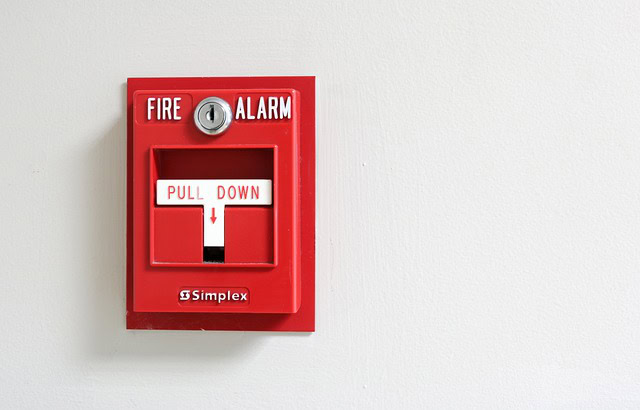
Normally, fire management personnel take Red Flag Warnings seriously and preemptively move resources into particular regions if something happens. Likewise, it is your responsibility to know what the current burn bans are active in your area and follow the rules for the safe use of fire during these times.
You should:
- Help spread awareness and assist those who may need help.
- Follow and monitor warnings by your local fire department for valuable information. Stay informed through social media and local media outlets.
- Watch weather updates and sign up for emergency notifications.
- Report downed power lines, downed trees, and suspicious vehicles or persons by calling the police department non-emergency line.
- Report any fire, smoke, or unsafe activity that could lead to a fire immediately to 911.
Additional Red Flag Warning Tips
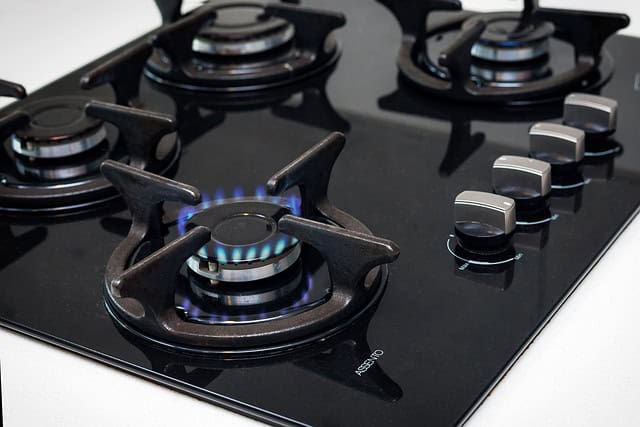
You already know the necessary steps to lower the risk of fires igniting and ensure your safety. If you are outside during a Red Flag Warning, here are some additional wildfire safety tips to remember:
- You should move gas cans — for chippers, lawnmowers, whatever — away from your home, barn, or garage.
- If appropriate, turn off the gas supply line at the meter.
- Clear decks above and below of flammable objects.
- Turn off all portable propane tanks and move them away from your house.
- Smoke alarms save lives, so place them around your home and always swap out their batteries every year. You should also inspect the smoke alarms every other month to ensure they work properly.
- Keep fire extinguishers handy in high-risk fire spots like the garage and kitchen.
- Deploy spark arrestors on portable gasoline-powered equipment to prevent any accidental fire.
Occasions When You Can Avoid Red Flag Warning Restrictions
During a Red Flag Warning, there are some exemptions to the restrictions and guidelines.
These include:
- If you have a special permit that specifically authorizes your activity.
- You may have fires on your private property in permanently constructed charcoal grills, fire rings, or fire pits.
- Petroleum-fueled lanterns, grills, stoves, and heating devices are permitted only if they meet the fire underwriter’s safety regulations and have an on/off switch.
- If you are a local officer, state, federal, or member of a firefighting force or an organized rescue performing your official duty.
- You are allowed to use a grill or stove solely fueled by pressurized liquid petroleum gas (LPG).
Quickly set up your thermostat with our comprehensive guide, ensuring optimal performance and energy efficiency for your home heating and cooling system.
Frequently Asked Questions
How Do You Survive a Red Flag Warning?
A Red Flag Warning means you must follow the instructions from your local fire department and prepare to act quickly if a wildland fire starts nearby. The situation is pretty serious and demands your utmost attention.
Do not throw cigarettes or matches outside a moving car, never leave a fire unattended, and fully extinguish all outdoor fires. Also, if the law allows you to burn within your area, use a weighted metal cover to cover your burn barrel and ensure its holes are not larger than 3/4 inches.
Should I Be Worried About a Red Flag Warning?
Red Flag Warnings serve as a more urgent alert from the National Weather Service (NWS). It is an increased risk of fire danger issued to a select area when the fire weather conditions are about to occur now or shortly after—usually within 24 hours.
How Do You Prepare for a Fire Warning?
The most important thing is to follow the instructions provided by your local fire department. But in the meantime, have your “Go” kit packed and near your door so they are easy to grab in evacuation panic mode.
Also, make an evacuation plan and collect all necessary supplies, such as a good portable radio and flashlights, ready to go. Plan your escape route and ensure everyone else living in your house knows the plan of action.
Is a Red Flag Warning Worse Than a Fire Watch?
A Red Flag Warning is declared when there is high confidence of extreme fire behavior occurring or will happen within the next 24 hours. A Fire Weather Watch is given up to 72 hours before the wildfire risks are expected to occur.
Bottom Line
You should take proactive steps to minimize the risk of fire incidents when you get a Red Flag Warning. It is your responsibility to strictly follow all fire restrictions and burn bans in your area and wherever you plan to visit. Remember that you can face charges and pay for damages if a wildfire occurs from your actions.

If you have any questions, feedback or suggestions about this article, please leave a comment below. Please note that all comments go into a moderation queue (to prevent blog spam). Your comment will be manually reviewed and approved by Tristan in less than a week. Thanks!